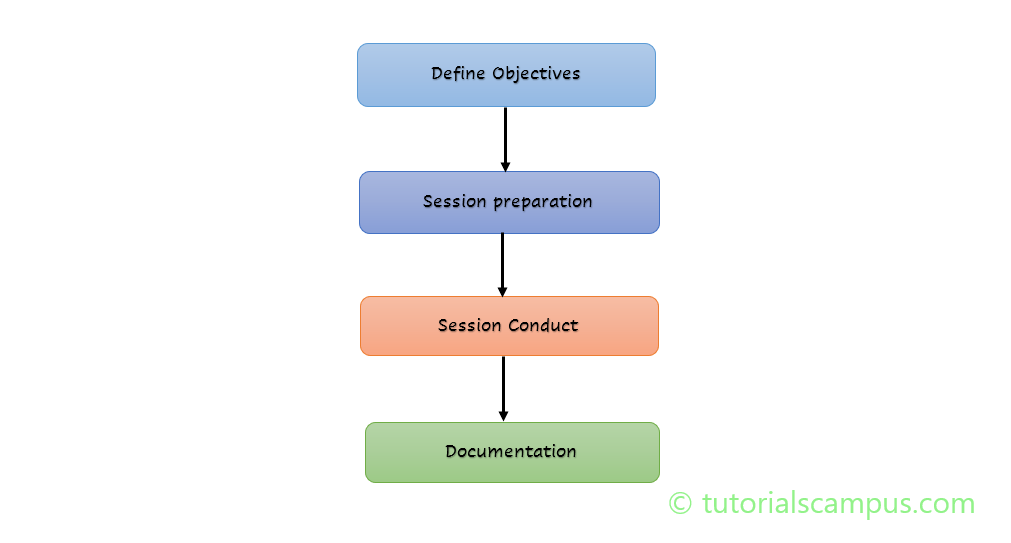SDLC JAD Model
Why JAD Model?
In 1970s, there is no methodology which aims continuous interaction with client to achieve client satisfaction. This emerges the need of new model in SDLC. JAD model fulfils the above requirement.
What is JAD Model?
JAD Model full form is Joint Applcation Development model. It aims to invlove and coordinate with client in desing and development of an software application. In this model, a series of collaborative workshops gets conducted to achieve continuous corodination with client.
Chunk Morris and Tony Crawford developed JAD methodology in 1970s. They started teaching this approach fro 1980s. In different with waterfall model, JAD leads to shorter development and greater client satisfaction by involving client throughout the development process.
JAD is a requirements-definition and software system design methodology. The subject matter experts (SME), stakeholders, software architects, end-users, business analysts, and developers attend collaborative workshops (called JAD sessions) to work out a system's details.
Roles -
- Facilitator or the Session Leader -
Fecilitator manages the sessions as well as maintains the group concentrating on the task. The facilitator stays impartial during the period of the session to be able to successfully mediate and resolve disputes. - Scribe or Documentation Expert -
Documentation expert records and documents every phase. The scribe is to ask for transparency in significance and is allowed to raise queries. Skills required for this position are word processors or CASE tools (development tools that are applied for diagramming, form and report producing). - Project Manager -
Project manager is the person who handles the project, conducting meetings and provides the status to client on a weekly or monthly basis. - End User or Client Representatives -
End user or Client representative is the person who is familier with the business requirements and explains to all stake holders. The end-user must have excellent knowledge and experience. - Systems Analyst -
The System Analyst focuses to understand the requirements from the client or end-user and converts them to the technical requirements that are understandable by the development team. - IT and/or IS Representatives -
These are the programmers and other developers. This group is offered to evaluate technical possibility, design and develop the new requirements. - Executive Sponsor -
Executive Sponsor is normally a high-level manager or executive, who contracts the project. - Outside Observers -
Outside Observers are the members of the team who are not allowed to join in the meeting at any stage. They are to monitor and obtain understanding into the business by inquiry or familier with the workshop development.
Phases -

Let us see the phases of JAD Model are shown below -
- Define Specific Objectives - The facilitator with stakeholders sets all the objectives and then list of items distributed to other developers and participants to understand and review. This objectives includes the scope of the projected system, its outcome, technical specifications, etc.
- Session Preparation - The facilitator is responsible for preparation of relevant data that is required to discuss in the session before the session.
- Session Conduct - The facilitator is responsible for identifying issues that requires to be fixed to make the system error-free. The facilitator attends the session as a participant but it may not required to say regarding any information.
- Documentation - After the product developed, the records and published documents are move forward into the meeting so that the stakeholders and customers can approve it through the meeting.
Advantages -
- Improved Delivery Time.
- Cost Reduction.
- Better Understanding.
- Improved Quality.
- Resolves difficulties more simply and produces error-free software.
- Lowers Risks.
- Faster progress.
Disadvantages -
- Difficult to align goals and maintain focus because of different options within team.
- Require a significant commitment.
